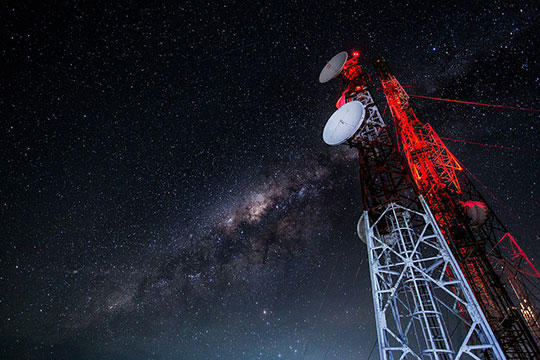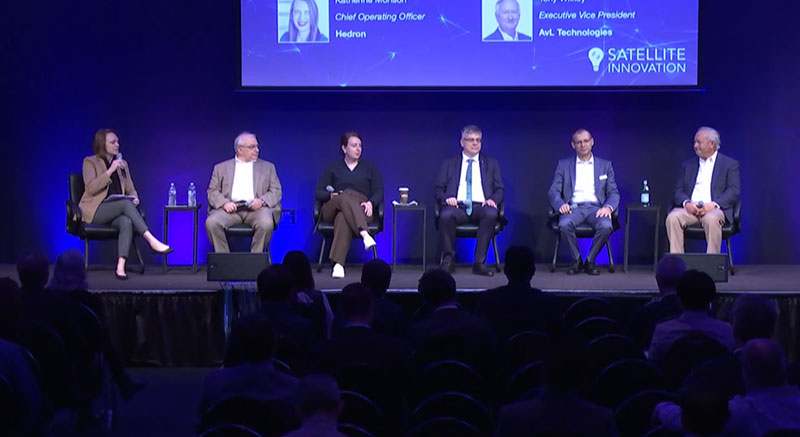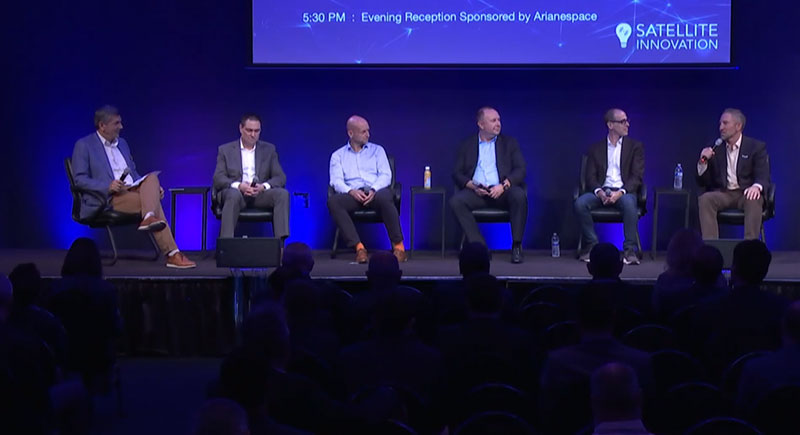 Both satellite and telecommunication service providers are acknowledging the need to partner together to support user demand.
Both satellite and telecommunication service providers are acknowledging the need to partner together to support user demand.
MOUNTAIN VIEW, Calif. — Across multiple panels at Satellite Innovation 2022 in Silicon Valley, there was widespread recognition among ground providers that the coming years will bring closer collaboration with telcos. To paraphrase the old saying, if you can’t beat a $2.7 trillion market, join it!
“I find the whole terrestrial-satcom showdown is not really a showdown, it’s just an evolution,” said Alexander Mueller-Gastell, CEO of ND SatCom. “We’re now getting to a point where, in satellite, there is so much going on that we’re confident enough to not fight against terrestrial but accept it as a means to also be communicative.”
Despite more on-orbit capacity coming online across LEO, MEO and GEO orbits, satellite’s share of the global telecommunications market stands at just 1%. Slava Frayter, North American Regional VP of Gilat Satellite Networks, joked that satellite and terrestrial networks have always been “symbiotic…if you can call 99 versus 1 symbiotic.”
The slow pace of adoption of solutions and standards used by telcos has been a significant limiting factor, he continued. “I think we’re finally doing the right thing, which means we’re standardizing on the interfaces that telco is using.”
Satellite in a 5G World
As much as the satellite industry has realized the need to cooperate with telcos, there’s gradual recognition among telcos that user demand will eventually strain terrestrial mobile networks.
Nearly 70% of all mobile data traffic is video and that will likely expand to 79% by 2027. At the same time, end users are engaging with more latency-sensitive, high-value applications, like live and on-demand HD and Ultra HD video, augmented reality (AR) and virtual reality (VR) to the rise of autonomous vehicles.
 Speakers address the new services defining the satellite industry of tomorrow at Satellite Innovation 2022, Oct. 12, 2022 in Mountainview, Calif. (Source: Satellite Innovation 2022)
Speakers address the new services defining the satellite industry of tomorrow at Satellite Innovation 2022, Oct. 12, 2022 in Mountainview, Calif. (Source: Satellite Innovation 2022)
In that changing dynamic, ground service providers see the immediate need to incorporate the 5G waveform and 3GPP standards into their solutions.
“We’ll see the pressure growing on mobile networks and they cannot scale easily and effectively and cost-effectively to support this kind of traffic,” said Aviv Ronai, Chief Product and Marketing Officer at NOVELSAT, a company providing next-generation ground segment technology and connectivity solutions.
Satellite is “ideal” to scale and bring content closer to users at the edge of the network, he continued. One potential solution is a satellite-to-cell site connection to mitigate 5G network congestion and guarantee high user experience on the device, Ronai added.
There remains some tension between ground service providers who see satellites delivering 5G services ubiquitously to any user on any device and those who believe that is still many years into the future.
David Gelerman, CEO of Spacebridge, which develops and provides ground network infrastructure for GEO and NGSO constellations, warned about “the myth around 5G.” Even as satcom providers adopt 3GPP standards and provide broadband services to specialized user terminals, they are a long way from providing high-data throughput to standard consumer devices.
In the near term, Gelerman suggested the satellite 5G environment will be defined by end-to-end orchestration, applying terrestrial interfaces to satellites, including GEO and improving vendor interoperability.
Though reliable satellite-based 5G has not been deployed on a large scale, many satcom providers are moving aggressively into the area, including some experimenting with direct-to-device 5G services.
Flexible Ground and Hybrid Networks
Much more is demanded of the ground segment as the user base of satellite services expands. As a result, ground operators and service providers are focusing more effort on hybrid networks—enabling connections across multiple orbits and multiple missions, and between space and terrestrial networks.
 Speakers address the role of ground networks in hybrid space architectures at Satellite Innovation 2022, Oct. 12, 2022 in Mountainview, Calif. (Source: Satellite Innovation 2022)
Speakers address the role of ground networks in hybrid space architectures at Satellite Innovation 2022, Oct. 12, 2022 in Mountainview, Calif. (Source: Satellite Innovation 2022)
“We see the growing and varying need to deal with multiple waveforms, orbits, constellations... And today’s network just doesn’t cut it in order to scale to all these services for multiple players and stakeholders,” explained Ronai.
Traditionally, hybrid networks typically need a combination of terminals, antennas, modems and management systems. The cost and capital outlay for that kind of flexibility was significant. Today, ground infrastructure providers have software solutions and virtualized network functions to support multiple missions. Ronai noted, “Once you virtualize the network, you also strike synergies with the cloud networks” creating a multidomain solution on top of the other benefits.
In general, the ground segment is becoming more software-driven than hardware, according to Frayter. “Virtualization of waveforms, that’s already happening. That’s where the industry and ground segment specifically is moving. So, the introduction of a fully software-defined modem at the edge will enable users to run multiple waveforms.”
Ground solutions providers who spoke at Satellite Innovation mostly advocated for generic COTS hardware to support software-defined functions and enable connectivity with different architectures and different networks.
Far into the future, some providers envision a universal terminal, capable of interfacing with any network and linking to any orbit as the “holy grail” of ground connectivity.
Explore More:
Podcast: Satellite and Telecom Integration, Carrier Ethernet and New Markets
Podcast: Smart Phones, Dead Zones and Cell Towers in Space
At WSBW Ground Providers Agree: The Future Is Digital, Flexible, Interoperable
